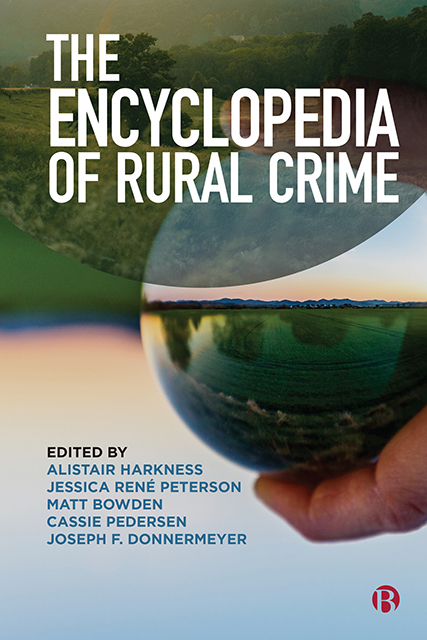Book contents
26 - Technology and Interpersonal Violence
Published online by Cambridge University Press: 20 June 2023
Summary
Interpersonal violence persists across all landscapes, yet research and efforts to prevent and regulate such harms have been focused primarily on non-urban locations. As technology infiltrates all spheres of our lives, it is increasingly used to enact interpersonal violence: this lethal and non-lethal violence occurs in both familial and care settings (including child abuse, intimate partner abuse, elder abuse) and community settings (such as bullying, harassment and assault by acquaintances, strangers or persons who may be known, in social environments, schools and workplaces).
To advance our understanding of and responses to these dangers, a spatial approach is key – this means recognizing how rurality shapes victimization and perpetration (see Harris, 2018; DeKeseredy, 2021). Additionally, it requires considering how the spacelessness of technology can be weaponized but can also offer opportunities for rural people to seek assistance and support.
Intersectionality and vulnerability
Anyone can perpetrate or be subjected to technology-facilitated violence. However, research suggests that harms are more likely to be experienced by cisgender women and gender and sexuality diverse people than cisgender men, and Black, Indigenous, people of colour more than White people.
Those who practice a religion (especially a religion other than Christianity) and people with cognitive, intellectual or physical disabilities and mental illness have also reported high rates of harm. Thus, an intersectional approach to studying technology-facilitated violence captures the interrelationship between discrimination, disadvantage, social categorization and victimization. Rurality, whilst not an intersecting oppression, adds a degree of vulnerabiliy and warrants attention, including in relation to technology-facilitated violence.
Technology-facilitated violence
‘Technology’ is useful as an all-encompassing term (although somewhat vague) and is often used to refer to telecommunication devices (phones, tablets, computers), trackers, digital media and the Internet of Things. However, thinking more holistically about technology helps us think more holistically about harm. Assistive technologies (such as hearing aids, screen readers, transfer devices and wheelchairs) are key for persons with physical, intellectual or cognitive disabilities.
Medication (for example contraceptives, hormone therapy, antidepressants) can arguably be viewed as technologies, and are essential for managing physical, sexual and mental health and lifestyle (see Fileborn and Ball, 2018).
- Type
- Chapter
- Information
- The Encyclopedia of Rural Crime , pp. 104 - 107Publisher: Bristol University PressPrint publication year: 2022

